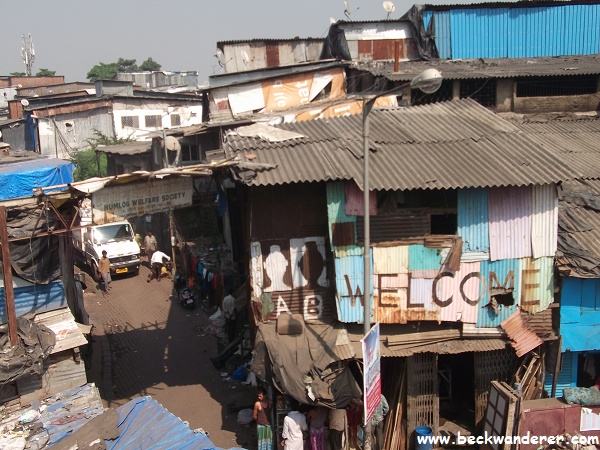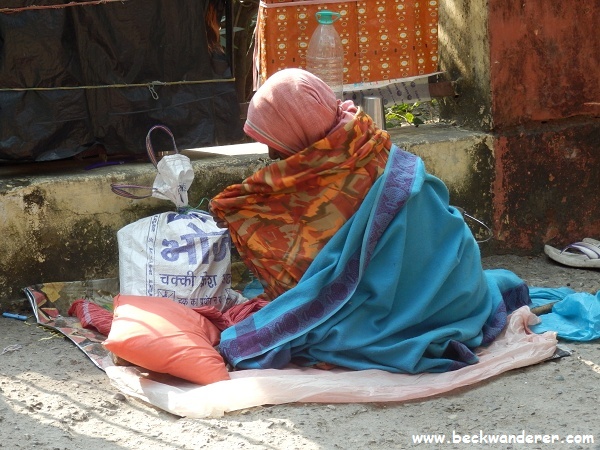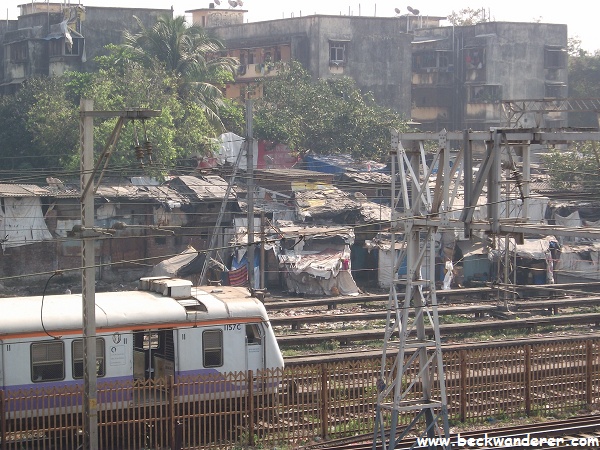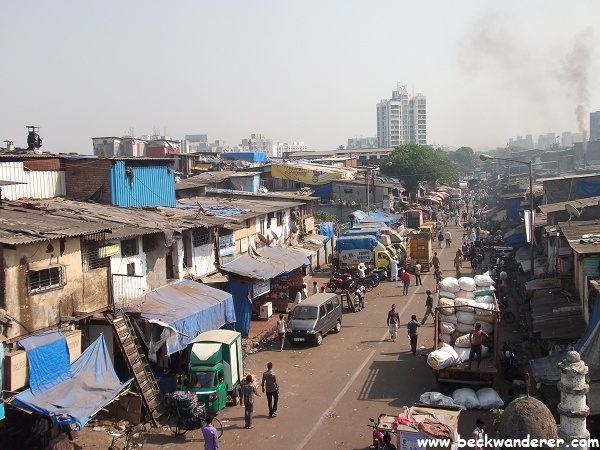Dark, narrow alleys with only the slightest glimpse of daylight shining through, which to pass along you need to crouch low to prevent your head hitting the corrugated iron roofs jutting out and the mess of wires dangling from above; broken slabs haphazardly balanced over open sewages, which rock under your footsteps; 2 storey windowless concrete homes consisting of only two small rooms, housing goodness know how many people. Welcome to the residential district of Dharavi, the 3rd largest slum in the world.
I personally wouldn’t want to live there after being spoilt by the luxuries of the Western world, however the slums were no way near as bad as I imagined. There is more poverty on the streets of Mumbai; in the slums not one person asked us for money, the children were very friendly and the only thing they wanted from us was to practice their English; and I was even given a free fizzy drink (and my stomach lived to tell the tale).
I described the worse section, but Dharavi slum is a city within a city. Everything the residents require is there:
- Thousands work in a thriving industrial sector: plastic and metal recycling, pottery making, leather industries, shoe making, embroidery factories, colour dyeing, soap making, bakeries. However, health and safety would have a field day. No safety gear, one poor guy had obviously lost is finger to the saw he was using to cut up plastic; the dyers coloured blue up to their armpits as they wore no gloves for protection.
- Shops selling everything from fruit to saris to gold to live chickens to DVDs to icecream Ian’s delight;
- Restaurants;
- 2 government hospitals and private health clinics;
- Schools;
- Police stations;
- Temples, churches and mosques;
- 24 hour electricity. The most surprising thing of the slums, for me, was each house even had its own electric meter;
- Pipes provide water, which is collected in large blue barrels;
- Government owned public conveniences. Hmmm with all the Indian men I have seen peeing up against walls during this trip, I don’t quite believe the statistic that 75% of people use them;
The Dharavi slum tour was certainly eye opening, but not in the way I expected. I know some people would find it disturbing to see young children playing in rubbish tips with old electric parts as toys, but their smiles are just as genuine as those sitting in front of the latest video game. Our Western world is a million times removed from this world, but this is their life and they are making the most of it.
Recommendation: I would highly recommend an organised tour or run the risk of getting lost for days in the maze of shanty buildings. The Traveller’s Inn Hotel, where we were staying, helped us book a slum tour with Mystical Mumbai for 650 rupees each. Our guide, Sabu, has lived in the slums all his life, so as well as providing him a daily wage we got to hear all his stories.
Please note, to respect these people’s way of life, you are not allowed to take photos within the slums.








 Life in the Himalayas
Life in the Himalayas A Day with the Hill Tribes
A Day with the Hill Tribes PhotoBlog: Get Humped at Pushkar Camel Fair
PhotoBlog: Get Humped at Pushkar Camel Fair